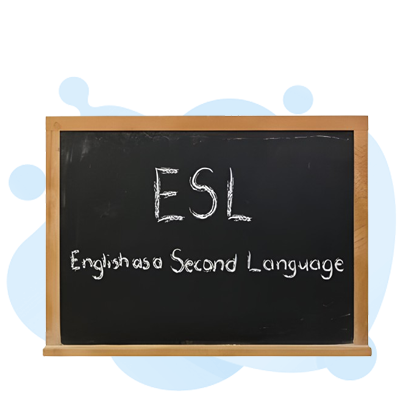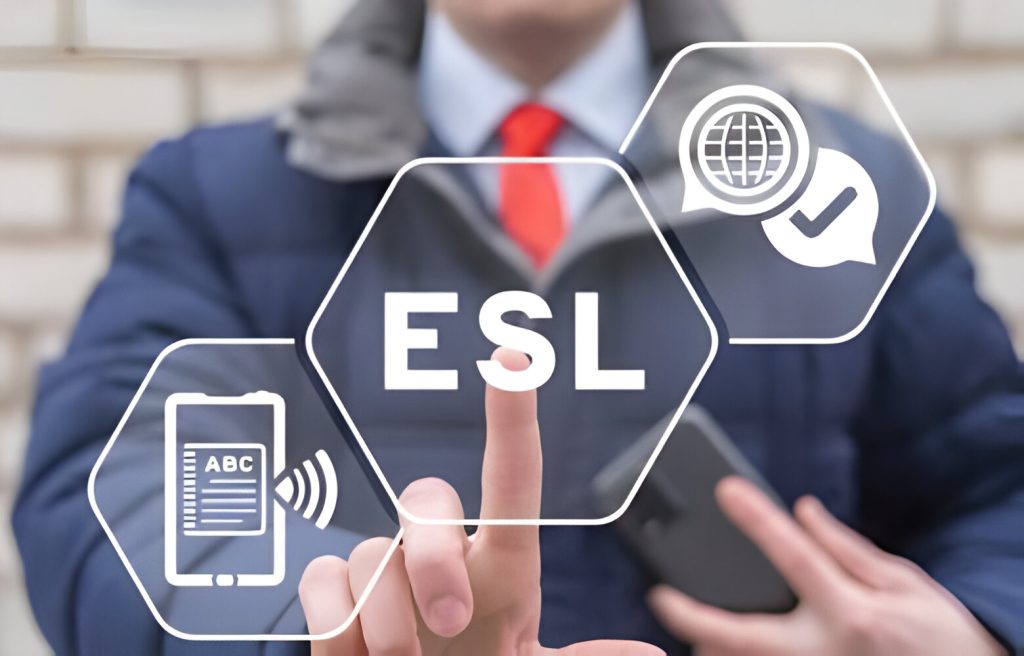Master English as a Second Language 2025- ESL Success Tips

Welcome to the world of English as a Second Language 2025 (ESL). Learning a new language can be a challenging but rewarding experience. Whether you’re interested in improving your communication skills, advancing your career opportunities, or connecting with people from different cultures, ESL classes can provide you with the tools you need to achieve your goals.
One of the great benefits of the internet is the ability to learn English online. With just a few clicks, you can access a variety of resources, courses, and interactive platforms that cater to different learning styles and proficiency levels. Whether you’re a beginner or an advanced learner, online learning offers flexibility and convenience, allowing you to study at your own pace and in the comfort of your own home.
Free ESL Practice Test Online
Key Takeaways:
- ESL classes are essential for mastering English as a Second Language.
- Learning English online provides flexibility and convenience.
- Online resources offer a variety of tools and courses for different proficiency levels.
- The internet connects learners with opportunities to practice and interact with English speakers from around the world.
- Developing strong communication skills in English can open doors to new career prospects and cultural experiences.
ESL Resources and Curriculum for Effective Language Learning
When it comes to learning English as a Second Language (ESL), having access to reliable resources and a well-structured curriculum is crucial. In this section, we will explore the various ESL resources available and delve into the importance of a comprehensive and organized curriculum. By utilizing these resources and following a structured curriculum, ESL students can enhance their language learning experience and achieve proficiency in English.
ESL Resources
ESL resources encompass a wide range of materials and tools that can greatly support language learning. From textbooks and multimedia resources to online platforms and interactive apps, the variety of resources allows ESL students to engage with the language in diverse ways.
One popular resource is English-language learning websites, such as ESL Gold and Duolingo. These platforms offer a wealth of exercises, activities, and lessons designed to develop language skills. Additionally, ESL textbooks, like “Side by Side” and “American English File,” provide structured lessons and practice opportunities.

The use of technology in ESL education has revolutionized language learning. Interactive tools, such as language learning apps like Rosetta Stone and Babbel, offer immersive experiences that enable students to practice speaking, listening, reading, and writing English in a dynamic way.
The availability of ESL resources online has made learning more accessible and convenient for students worldwide. With just a computer or mobile device and internet access, students can access a wealth of materials, practice exercises, and language learning communities.
Lorem ipsum dolor sit amet, consectetur adipiscing elit. Ut elit tellus, luctus nec ullamcorper mattis, pulvinar dapibus leo.
The Importance of a Well-Structured ESL Curriculum
While having access to a variety of resources is important, a well-structured ESL curriculum is equally essential for effective language learning. A curriculum provides a roadmap for the sequential development of language skills, ensuring that students progress systematically.
A comprehensive ESL curriculum addresses the four core language skills: listening, speaking, reading, and writing. It incorporates various activities, assessments, and learning objectives to engage ESL students in a holistic learning experience.
Furthermore, a well-structured curriculum considers the linguistic needs and proficiency levels of ESL students. It provides a scaffolded approach, starting with foundational language skills and gradually introducing more complex concepts. This allows students to build their English language proficiency incrementally.
Moreover, an effective ESL curriculum incorporates real-world contexts and authentic materials to make language learning relevant and practical. By exposing students to authentic English language resources such as newspapers, videos, and podcasts, they can develop the necessary skills to communicate effectively in real-life situations.
Challenges Faced by ESL Students and Solutions
While ESL students embark on their language learning journey, they may encounter various challenges that can impede their progress. Some common challenges include difficulties in grammar, pronunciation, vocabulary acquisition, and cultural differences.
One effective solution to address these challenges is to provide ample opportunities for ESL students to practice their language skills. Engaging in conversations with native English speakers, participating in language exchange programs, or joining ESL conversation clubs can significantly improve their speaking and listening abilities.
Additionally, incorporating multimedia resources and authentic materials in the curriculum can help students overcome cultural differences and develop their comprehension skills. Watching movies, listening to music, and reading books in English can expose students to the cultural nuances and idiomatic expressions inherent in the language.
To enhance vocabulary acquisition, incorporating vocabulary-building activities, such as word games, flashcards, and vocabulary journals, can be highly beneficial. These activities encourage active learning and retention of new words and phrases.
Overall, with the right resources, a well-structured curriculum, and proactive strategies to overcome challenges, ESL students can thrive in their language learning journey and achieve fluency in English.
| ESL Resources | Advantages |
|---|---|
| English-language learning websites | Accessible, interactive, and offer a wide range of exercises and lessons. |
| ESL textbooks | Provide structured lessons and practice opportunities. |
| Language learning apps | Offer immersive experiences and interactive exercises. |
| Online platforms | Provide a wealth of materials, practice exercises, and language learning communities. |
Effective ESL Teaching Materials and Programs
In order to provide quality ESL instruction, it is crucial to utilize effective teaching materials and programs. These resources play a vital role in engaging ESL learners and facilitating their language acquisition journey. Let’s explore different types of teaching materials and the benefits of ESL programs.
Types of Teaching Materials
When it comes to ESL teaching materials, there is a wide range of options available. Teachers can choose from:
- Textbooks: Traditional textbooks provide structured content and exercises to reinforce language learning.
- Online Resources: Interactive websites, language learning apps, and online exercises offer learners the flexibility and convenience of learning anytime and anywhere.
- Interactive Tools: Multimedia tools, such as videos, audio clips, and virtual simulations, engage ESL learners and make the learning experience more dynamic and immersive.
Benefits of ESL Programs
ESL programs offer comprehensive learning experiences that go beyond individual teaching materials. These programs are designed to provide a holistic approach to language instruction, catering to the diverse needs of ESL learners. Some key benefits of ESL programs include:
- Structured Curriculum: ESL programs typically have a well-defined curriculum that covers various language skills, including listening, speaking, reading, and writing.
- Progress Tracking: Programs often include assessment tools and progress tracking systems to monitor learners’ development and identify areas of improvement.
- Supportive Community: ESL programs foster a supportive learning environment where learners can interact with peers, participate in discussions, and practice their English language skills.
To illustrate the effectiveness of ESL teaching materials and programs, let’s take a look at the following table:
| Teaching Material/Program | Benefits |
|---|---|
| Textbooks | Structured content for systematic learning |
| Online Resources | Flexibility and convenience of learning |
| Interactive Tools | Engaging and immersive learning experience |
| ESL Programs | Comprehensive approach, progress tracking, and supportive community |

Assessing ESL Proficiency: Tests and Evaluation
In order to gauge English proficiency for ESL learners, it is essential to utilize tests and evaluations that accurately measure language skills. These assessments provide valuable insights into an individual’s linguistic abilities and can guide their language learning journey. Let’s explore different types of ESL proficiency tests and their role in evaluating language proficiency.
Types of ESL Proficiency Tests
There are several commonly used ESL proficiency tests that assess different language skills. These tests are designed to evaluate various aspects of language proficiency, such as listening, speaking, reading, and writing abilities:
- TOEFL (Test of English as a Foreign Language): Focuses on academic English and is widely accepted by universities and colleges around the world.
- IELTS (International English Language Testing System): Similar to TOEFL, it measures English proficiency for academic and general purposes.
- Cambridge English Exams (such as FCE, CAE, and CPE): Offered by the University of Cambridge, these exams assess English language proficiency for different levels of competence.
- TOEIC (Test of English for International Communication): Evaluates English proficiency in a business context, focusing on reading, listening, speaking, and writing skills.
Each test has its own format, scoring system, and level of difficulty, allowing learners to choose the most suitable assessment based on their goals and requirements.
Importance of ESL Proficiency Tests
ESL proficiency tests play a crucial role in measuring language skills and providing a standardized evaluation of an individual’s English proficiency. These tests offer numerous benefits:
- Objective Evaluation: ESL proficiency tests provide an objective measure of language skills, eliminating bias or subjective judgments.
- Global Recognition: Many educational institutions, employers, and government agencies recognize and accept ESL proficiency test scores as proof of language proficiency.
- Career Advancement: Demonstrating English proficiency through high scores in these tests can enhance career prospects and open up new opportunities.
- Progress Tracking: By taking regular ESL proficiency tests, learners can track their progress over time and identify areas for improvement.
These tests serve as a benchmark to assess language proficiency accurately and motivate learners to further enhance their English skills.
Preparing for ESL Proficiency Tests
Preparation is key to performing well in ESL proficiency tests. Here are some effective strategies to help learners prepare:
- Understand the Test Format: Familiarize yourself with the structure, sections, and time constraints of the specific ESL proficiency test you will be taking.
- Practice Regularly: Engage in regular practice exercises, sample tests, and mock exams to become familiar with the test content and improve your test-taking skills.
- Focus on Weak Areas: Identify your weak areas and allocate more time to improve those specific language skills.
- Expand Vocabulary: Enhance your vocabulary by reading extensively, using vocabulary-building resources, and practicing word usage in different contexts.
- Seek Professional Guidance: Consider enrolling in ESL preparation courses or working with a tutor who specializes in test preparation.
By dedicating time and effort to test preparation, learners can boost their confidence and chances of success in ESL proficiency tests.
| Benefits of ESL Proficiency Tests | Overview |
|---|---|
| Objective Evaluation | Eliminates bias or subjective judgments |
| Global Recognition | Accepted by educational institutions, employers, and government agencies worldwide |
| Career Advancement | Enhances career prospects and opens up new opportunities |
| Progress Tracking | Allows learners to track their language proficiency progress over time |
Conclusion
In conclusion, mastering English as a Second Language (ESL) requires dedication, effective resources, and a well-structured curriculum. By immersing oneself in ESL classes and utilizing online learning platforms, individuals can actively engage with the language and improve their skills. Taking advantage of the various ESL resources available, such as textbooks, online materials, and interactive tools, can further enhance language learning and provide a comprehensive learning experience. Developing a strong foundation through a well-designed ESL curriculum is crucial for acquiring language proficiency and achieving success in the language learning journey.
Assessing ESL proficiency through tests and evaluations is an important aspect of tracking progress and identifying areas for improvement. By actively preparing for these tests and evaluations and employing effective strategies, ESL learners can enhance their language skills and demonstrate their proficiency. With dedication, persistence, and the application of the tips and strategies discussed in this article, ESL learners can confidently navigate their language learning journey and achieve their goals.
Mastering English as a Second Language is a rewarding endeavor that opens up opportunities for personal, professional, and academic growth. By embracing the learning process, accessing quality resources, and committing to regular practice, individuals can build a strong foundation in English language skills. Remember, language acquisition is a continuous journey, and with the right mindset and tools, ESL learners can confidently become fluent and proficient in English. Start your ESL journey today and unlock a world of possibilities!
FAQ
What are the benefits of learning English as a Second Language (ESL) through online classes?
Learning English online offers flexibility, convenience, and accessibility. Students can access lessons and resources at their own pace and schedule. Online platforms often provide interactive materials, multimedia resources, and opportunities for virtual communication and collaboration, creating an immersive learning experience.
What resources are available for ESL students?
There is a wide range of resources available for ESL students, including textbooks, online courses, language learning apps, podcasts, and language exchange programs. These resources provide opportunities to practice reading, writing, listening, and speaking skills, ensuring a well-rounded language learning experience.
How can ESL teachers create an effective curriculum for language learning?
An effective ESL curriculum should be well-structured, focusing on language skills development, vocabulary acquisition, grammar rules, and cultural competency. Teachers can incorporate a variety of materials, activities, and assessments that cater to students’ individual needs and learning styles, fostering a dynamic and engaging learning environment.
What challenges do ESL students face and how can they overcome them?
ESL students often face challenges such as limited vocabulary, pronunciation difficulties, and cultural barriers. To overcome these challenges, students can practice regularly, engage in language immersion activities, seek language exchange partners, and utilize online tools and resources that provide interactive language practice and feedback.
How do ESL programs enhance language learning?
ESL programs offer a comprehensive learning experience by providing structured courses, experienced instructors, and access to a supportive learning community. These programs often incorporate real-life scenarios, cultural immersion, and interactive activities, helping students develop essential language skills and gain confidence in using English in various contexts.
What types of ESL proficiency tests are commonly used?
Common ESL proficiency tests include the TOEFL (Test of English as a Foreign Language), IELTS (International English Language Testing System), and Cambridge English exams (such as CAE and FCE). These tests assess students’ abilities in listening, reading, writing, and speaking to determine their level of English proficiency.
How can students prepare for ESL proficiency tests?
To prepare for ESL proficiency tests, students can review test formats and familiarize themselves with the content and time constraints. They can practice test samples, seek guidance from experienced teachers or tutors, and utilize online resources that offer practice exercises, study materials, and mock tests to enhance their exam preparation.
What strategies can help improve ESL proficiency?
Strategies to improve ESL proficiency include immersing oneself in an English-speaking environment, engaging in conversations with native speakers, reading extensively in English, watching movies or TV shows in English, and actively practicing language skills through regular speaking and writing exercises. Consistent and focused practice is key to acquiring and refining language abilities.